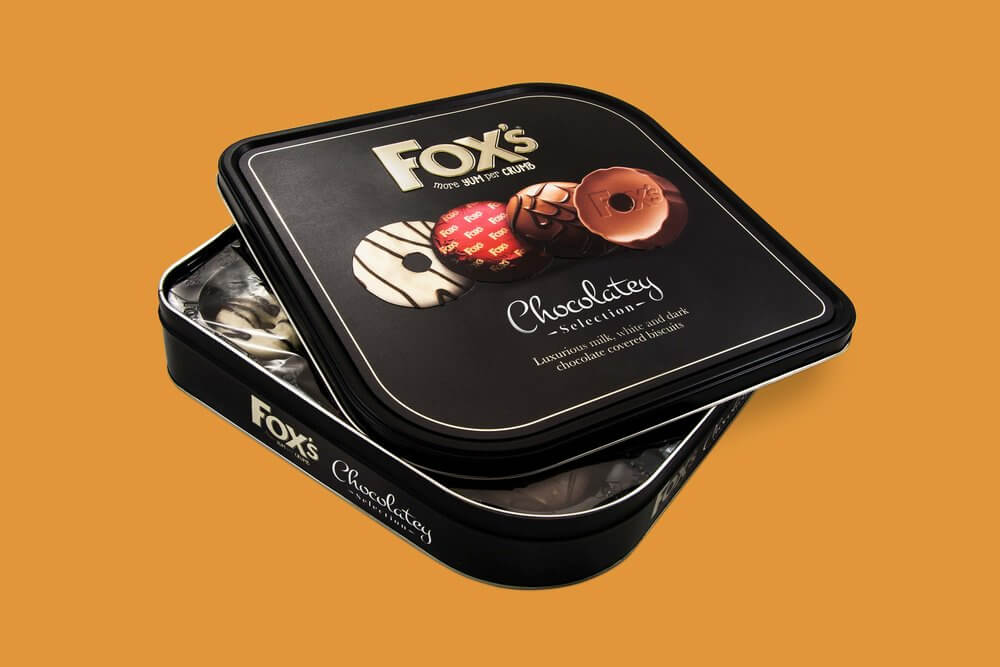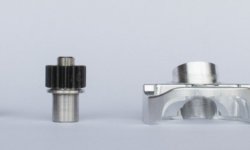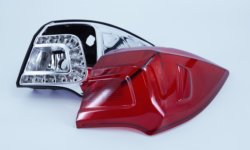Many products are designed to interact with food in some way or another. Items like containers, packaging, cans and bottles, kitchen utensils, machinery, and appliances can all make direct or indirect contact with edible goods, which are then consumed.
It’s important to know what your food is made from, but it’s equally important to know what goes into these food-contact items like packaging and utensils. Some materials are toxic or degradable and are therefore unsuitable for close contact with food as they could end up causing serious harm to a consumer.
Because of this, companies that make food products have a lot to consider. Not only do they need to use materials that are strong, durable, affordable, and manufacturable, they need to use materials that are food-safe — and legally recognized as such.
This article discusses the material options (and restrictions) when making prototypes of food products like containers and kitchenware. It discusses US and EU regulations on food-contact materials and considers the differences between different manufacturing processes — CNC machining, 3D printing, etc. — when making prototypes of food products.
Why do materials need to be food-safe?
Products that come into contact with food or drink need to be made from specific materials so they do not cause harm to humans, alter the state of the food they touch, or lose their integrity after interacting with foods.
The main concern when a non-edible material touches a food product — when a knife cuts through a vegetable, for example, or when milk is stored within a carton — is that molecules of the non-edible material may end up in the food and then be consumed by a human. This transfer of molecules is known as migration.
When molecules of metals, plastics, or other materials contaminate the food product, they can affect the taste or appearance of the food, or worse, make it dangerous to eat. Food-safe materials tend to have a low rate of migration.
Materials used for food products also need to be adequately resistant to the foods they will come into contact with. For example, a container for a highly acidic beverage will need to be adequately corrosion resistant, and a microwavable container for a frozen meal will need to be heat resistant so as not to warp or break when used.
Which materials are safe for food products?
The suitability of certain food-safe or food-grade materials depends on the end-use of the parts being made. However, some materials are recognized as the standard in the industry.
Food-safe metals include:
- Stainless steel 316: Utensils, containers, machine parts
- Stainless steel 304: Utensils
- Stainless steel 430: Containers, especially for corrosive foods
- Titanium: Utensils, machine parts
- Cast iron: Pots, pans
- Aluminum: Cans, baking trays
Food-safe plastics include:
- HDPE: Bottles, food wrappers, food storage buckets
- LDPE: Cling wrap/film, waterproof inner container layer, six-pack connector rings
- PET: Bottles, jars, containers
- PP: Yoghurt pots, disposable microwaveable containers
What are the official regulations on food-safe materials?
Regulations on food products vary by country, so it is important to brush up on the rules and guidelines in your target market regions.
In the United States, these regulations are handled by the Food and Drug Administration (FDA), which discusses food products in a document called INDIRECT FOOD ADDITIVES: GENERAL. The FDA stresses the importance of “good manufacturing practices” and states that a “substance used as a component of articles that contact food shall be of a purity suitable for its intended use.”
In the European Union, regulations are provided by the European Food Safety Authority (EFSA). The EU stipulates that Food Contact Materials (FCMs) “should be sufficiently inert so that their constituents neither adversely affect consumer health nor influence the quality of the food.”
These documents — or the equivalents of other countries — should be consulted when preparing to manufacture a product for food use.
What should you consider when making food-safe prototypes?
It is important to remember that prototyping is not production, and prototypes are not subject to the same regulatory oversight as products being released to the market.
In most cases, it is useful to create a prototype from a food-grade material — the material that will eventually be used for production — in order to test its performance during R&D. If this is not possible, then a similar material should be considered.
But while there are practical advantages to using a food-safe material during prototyping, it is not necessary that each stage of the prototyping process pass strict regulatory standards. For example, during production, all machinery used must meet regulatory standards for food products, but this is not the case during prototyping, since the prototype will not be used by a consumer. This allows for plenty of cost-saving possibilities during prototyping without compromising the usefulness of the prototype.
Prototyping may involve the use of manufacturing equipment not used during production. Although prototypes that closely match their end-use counterparts are more useful, it may be necessary to use a lower-cost manufacturing process during prototyping, especially if only a small number of units are required.
What are the manufacturing processes for food-safe prototypes?
During the prototyping stage of product development, you have several options for making a food-safe prototype. (Some of these options, like 3D printing, become less viable when it comes to production.)
CNC machining: CNC machining centers can process virtually all food-safe metals and plastics. Ideal for kitchenware and non-disposable items.
Metal casting: Although more expensive than machining, casting may be used for iron skillets and other heavy-duty cookware.
Vacuum casting: Vacuum casting uses silicone molds, which are themselves food-safe, and is therefore ideal for small food containers and other plastic items.
Injection molding: Injection molding is an industry-standard process for food-safe materials like HDPE, LDPE, PET, and PP. However, it can be expensive when ordering prototypes in small quantities.
3D printing: 3D printing can be used to make some food-safe items, but the rough surface texture of printed parts can create gaps where bacteria can breed.
Sheet metal fabrication: Food-grade stainless steels like 304 and 316 are ideal for sheet metal fabrication and can thus be turned into baking trays, heavy-duty restaurant equipment, and more.
3ERP has years of experience making prototypes for a variety of customers. If you have any questions about food-safe prototypes and materials, do not hesitate to contact us.







